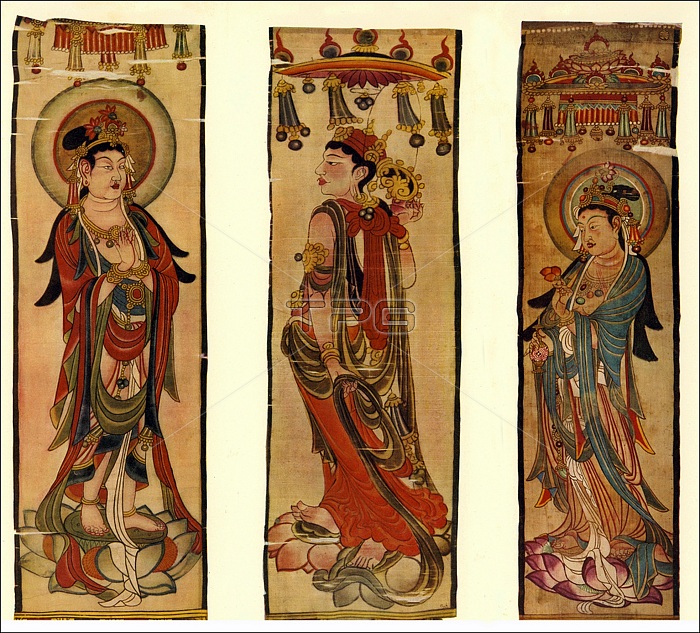
In Buddhism, a bodhisattva is either an enlightened (bodhi) existence (sattva) or an enlightenment-being or, given the variant Sanskrit spelling satva rather than sattva, 'heroic-minded one (satva) for enlightenment (bodhi).' Another term is 'wisdom-being.' It is anyone who, motivated by great compassion, has generated bodhicitta, which is a spontaneous wish to attain Buddhahood for the benefit of all sentient beings. The Mogao Caves, or Mogao Grottoes (Chinese: m?g?o k?, also known as the Caves of the Thousand Buddhas and Dunhuang Caves) form a system of 492 temples 25 km (15.5 miles) southeast of the center of Dunhuang, an oasis strategically located at a religious and cultural crossroads on the Silk Road, in Gansu province, China. The caves contain some of the finest examples of Buddhist art spanning a period of 1,000 years. The first caves were dug out in 366 CE as places of Buddhist meditation and worship. The Mogao Caves are the best known of the Chinese Buddhist grottoes and, along with Longmen Grottoes and Yungang Grottoes, are one of the three famous ancient sculptural sites of China. The caves also have celebrated wall paintings.
| px | px | dpi | = | cm | x | cm | = | MB |
Details
Creative#:
TOP27039041
Source:
達志影像
Authorization Type:
RM
Release Information:
須由TPG 完整授權
Model Release:
No
Property Release:
No
Right to Privacy:
No
Same folder images:

 Loading
Loading